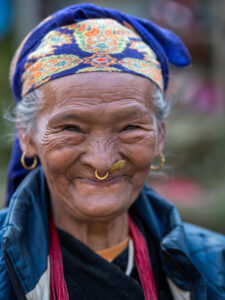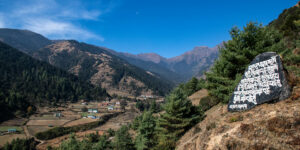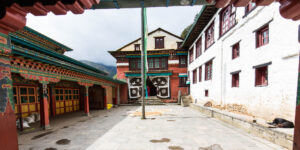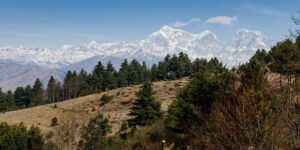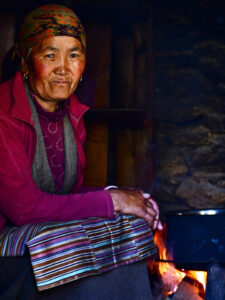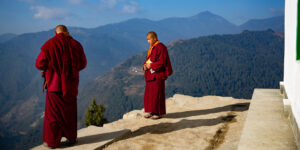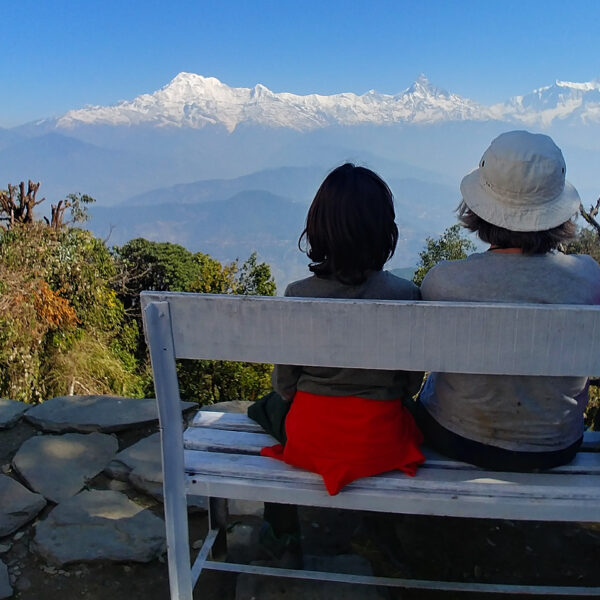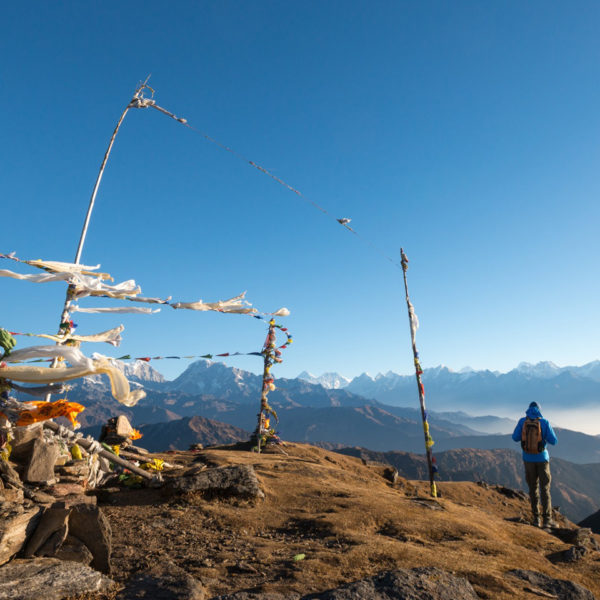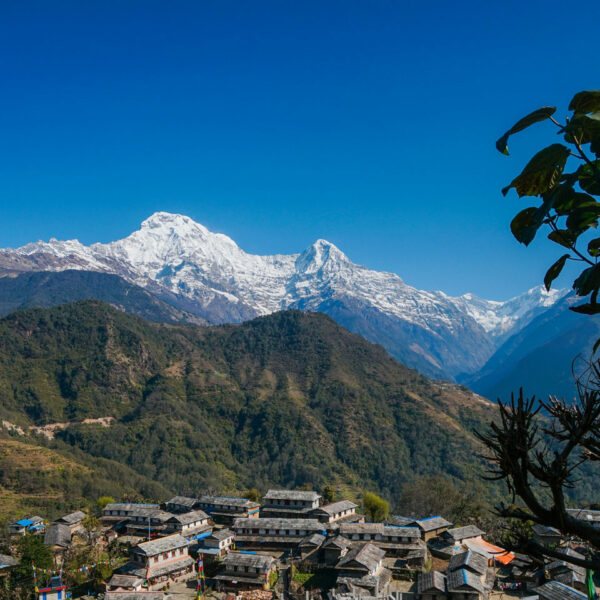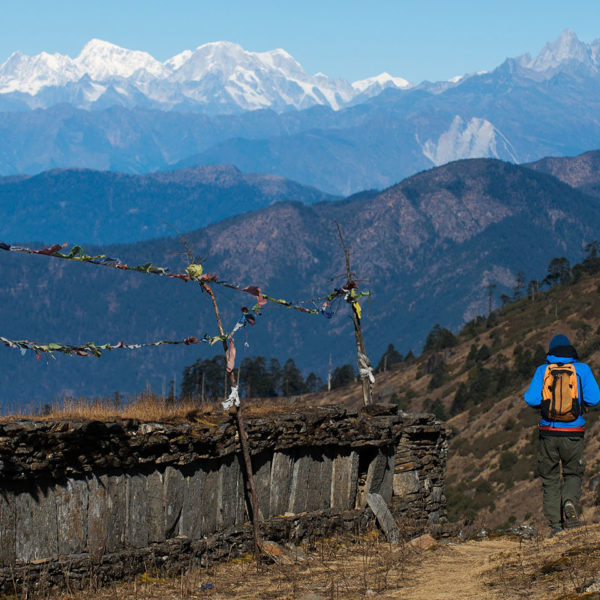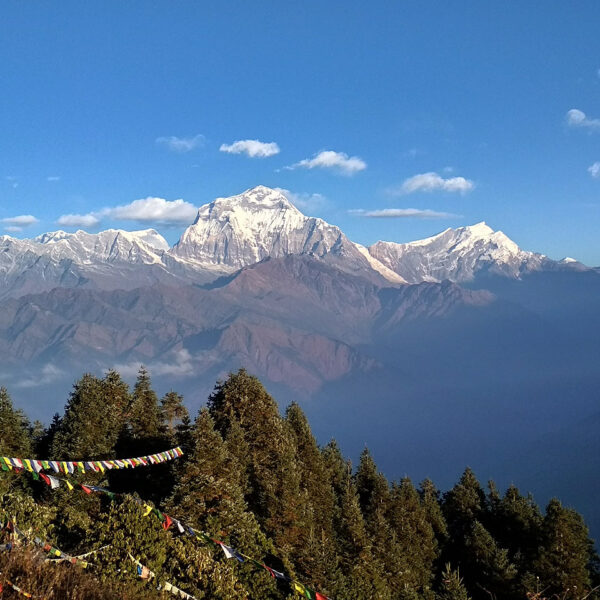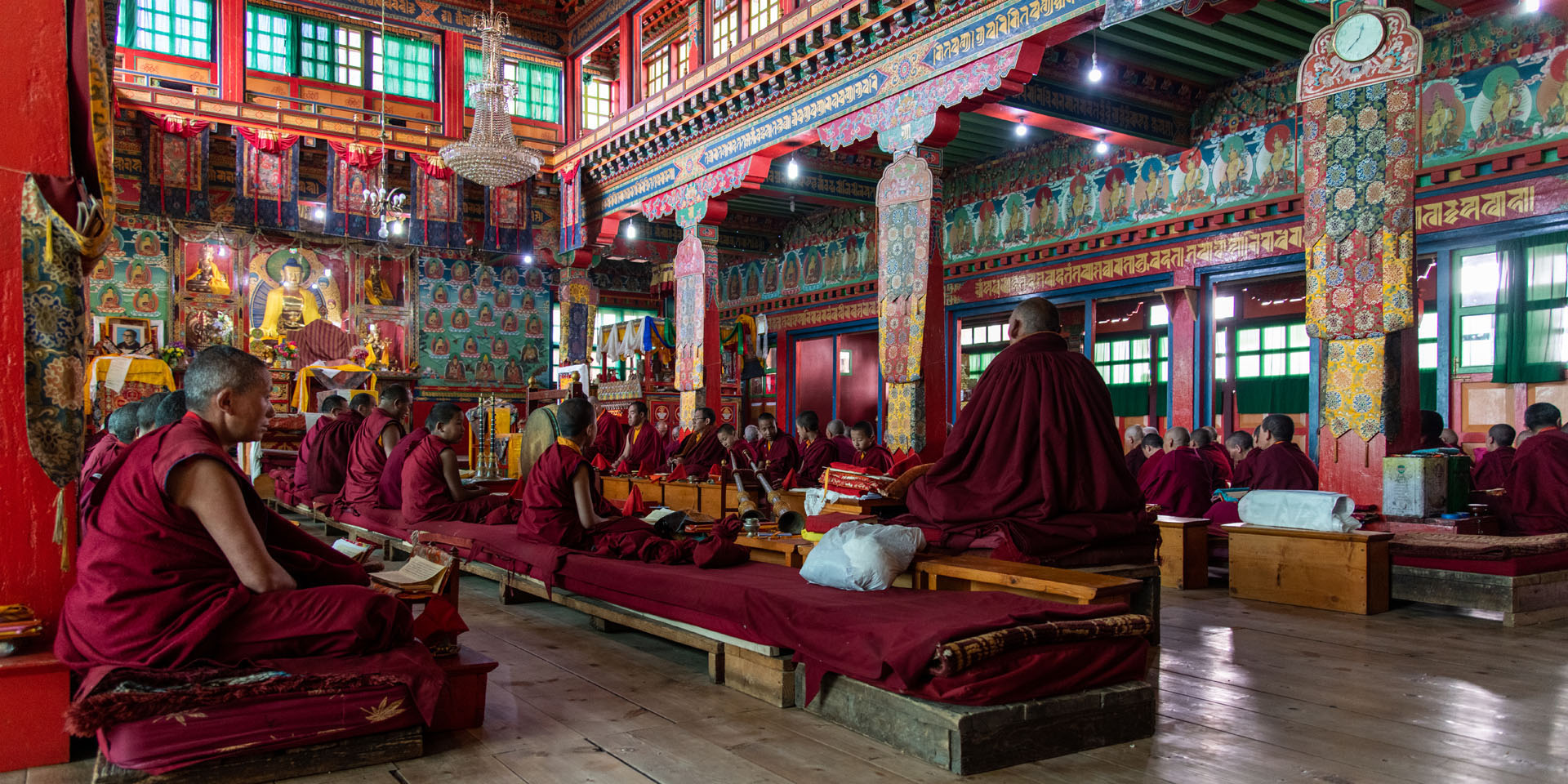


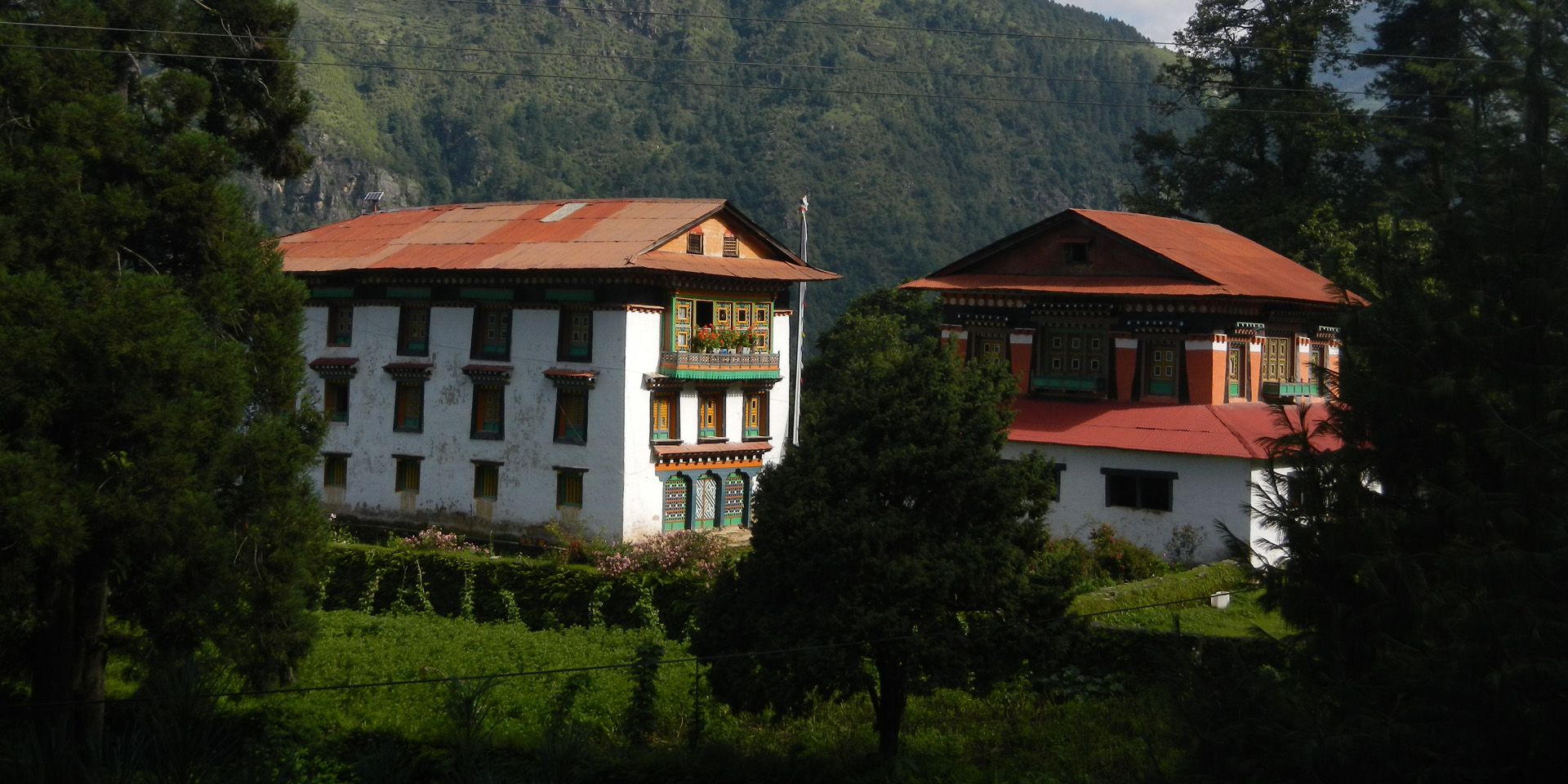
Solu – The Sherpa Culture Trek
This wonderful little trek in the lower Everest region, Solu, is designed to let you experience not only traditional Sherpa culture but also get up and close with Tibetan Buddhism. The area also offers magnificent views of Mount Everest and lots of other stunning mountains.
- Starts In: Kathmandu
- Ends In: Kathmandu
- Duration: 6 Days
- Difficulty Grade: Easy
Highlights
- Get views of Everest and many other Himalayan peaks
- Experience Sherpa hospitality in local tea houses
- Get off the beaten path in Solu the lower Everest Region
- Get an insight into Tibetan monastic life and stay in a monastery guest house
Itinerary
Day 01: Fly from Kathmandu to Phaplu, Trek from Phaplu to Junbesi [2675m]
Today we have an early morning start from our hotel to get to the airport for our short flight to the mountains of the Everest Region. As we fly into the airport at the little village of Phaplu we can see the classic style of the sturdy Sherpa houses, giving us a taste of the days ahead. After landing and meeting the rest of our trekking crew, we hit the trails on our way north. We are headed to the charming town of Junbesi, located in a lovely green valley on the main Jiri to Everest trekking and trade route. We set out following the course of the river which will be our guide for most of the day as we trek through small villages, terraced fields, and lush forest. Junbesi is a large village for this area and it is home to one of the famous ‘Hillary schools’ and a hydropower plant. The large monastery, built-in 1635, is claimed to be the oldest monastery in the Solukhumbu region (although a few other monasteries lay claim to title this as well).
Walking time: Approx. 5 hours
Accommodation: Tea House
Meals included:
Lunch, Dinner
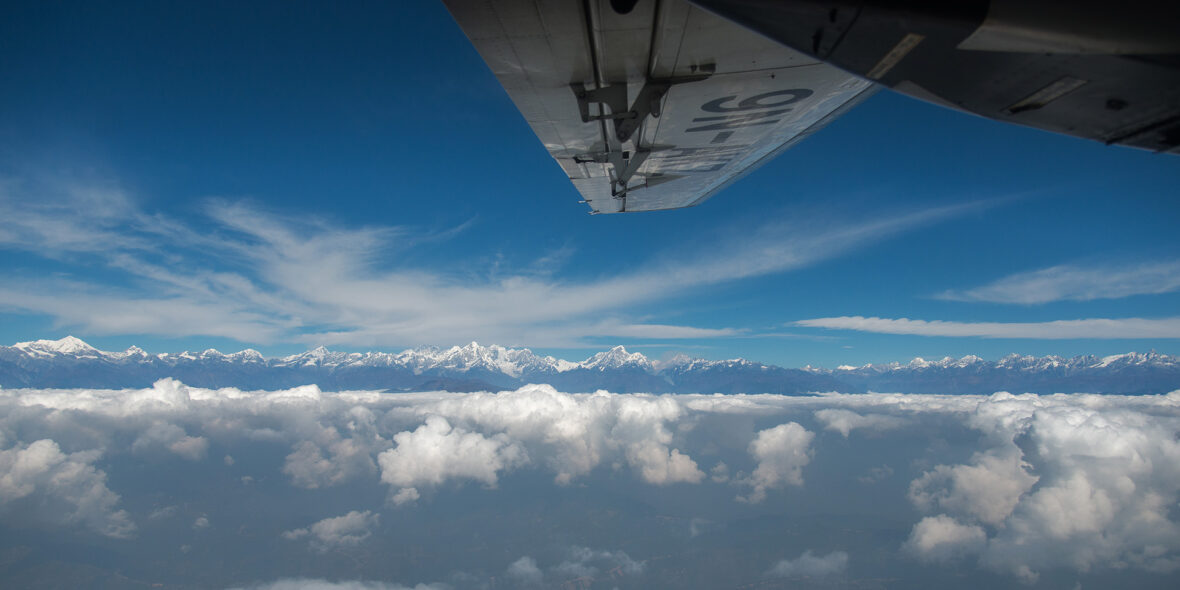
Day 02: Visit Thubten Choling Monastery
Today we head up the lovely valley northwards to Thubten Choling, one of the largest Tibetan resettlements in Nepal. The large monastery here was established by the highly esteemed Trulsik Rinpoche, who fled from the Rongbuk Monastery in Tibet in the 1950s. As one of the few remaining high lamas who was born and educated in Tibet, Trulsik Rinpoche is of immense importance to Buddhism, in particular, the Nyingma sect to which he and the Thuptencholing Monastery belong.
The monastery was built in the 1960s as a ‘temporary’ monastery until the Rinpoche could return to Tibet, however it has now been reconstructed as the permanent home of this Nyingma legacy and the Rinpoche’s reincarnate will be on this site, not in Tibet. In addition to the monastery, there is a Tibetan Medical school and hospital, so this is a great chance to learn about this ancient healing art.
In the afternoon we will return to Junbesi for a hearty dinner in our cozy tea house.
Walking time: Approx. 3-4 hours
Accommodation: Tea House
Meals included:
Breakfast, Lunch, Dinner
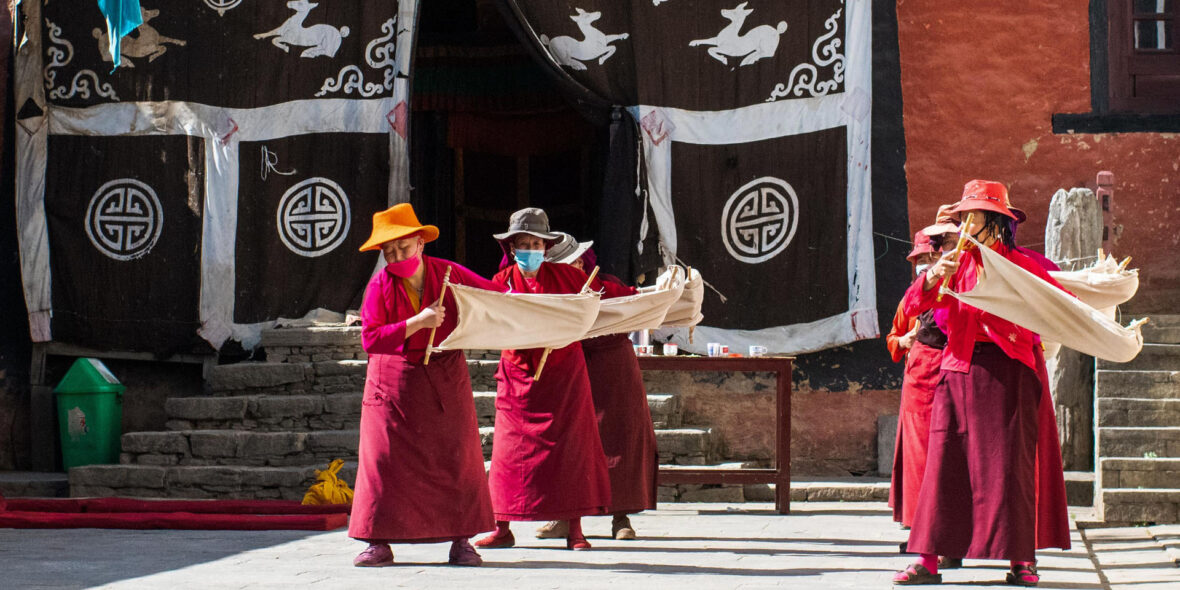
Day 03: Trek from Junbesi to Taksindu [2960m], Views of Mt. Everest
This morning we bid farewell to Junbesi and hit the trails again, bound for Taksindu. We cross the river at the ‘bottom’ of town and climb through forest up to Salung from where we get views of Mount Everest (8848m), Chamlang (7319m) and Makalu (8481m), weather permitting.
From here we also have gorgeous views out across the valley to Chiwong Monastery and on down towards Phaplu. We continue on the trails, contouring and then dropping down to a stream before a short climb up into Ringmo, famous for its apple orchards and interesting apple products such as apple rakshi (alcohol), cider and apple pie.
From here we have a final short climb to Taksindu La, from where we again have great mountains views and then a short descend to the Taksindu Monastery and our lodge. The Taksindu Monastery was built in 1946 by the Tengboche Lama and is usually open early morning or late afternoon, please make sure to leave a donation if you visit.
Walking time: Approx. 5-6 hours
Accommodation: Tea House
Meals included:
Breakfast, Lunch, Dinner

Day 04: Trek from Taksindu to Chiwong Gompa
Today we leave the main trekking route again and take a beautiful path down to Chiwong Gompa through the forest and along the ridgelines, a great walk. Chiwong Gompa is perched high on a cliff overlooking the valley. This monastery was founded in 1923 and has magnificent celebrations for the Mani Rimdu festival in autumn.
We will spend the night here, observing how the monastery functions and enjoying the view over Phaplu, staying at a newly build guest house right at the monastery.
Walking time: Approx. 5-6 hours
Accommodation: Tea House
Meals included:
Breakfast, Lunch, Dinner
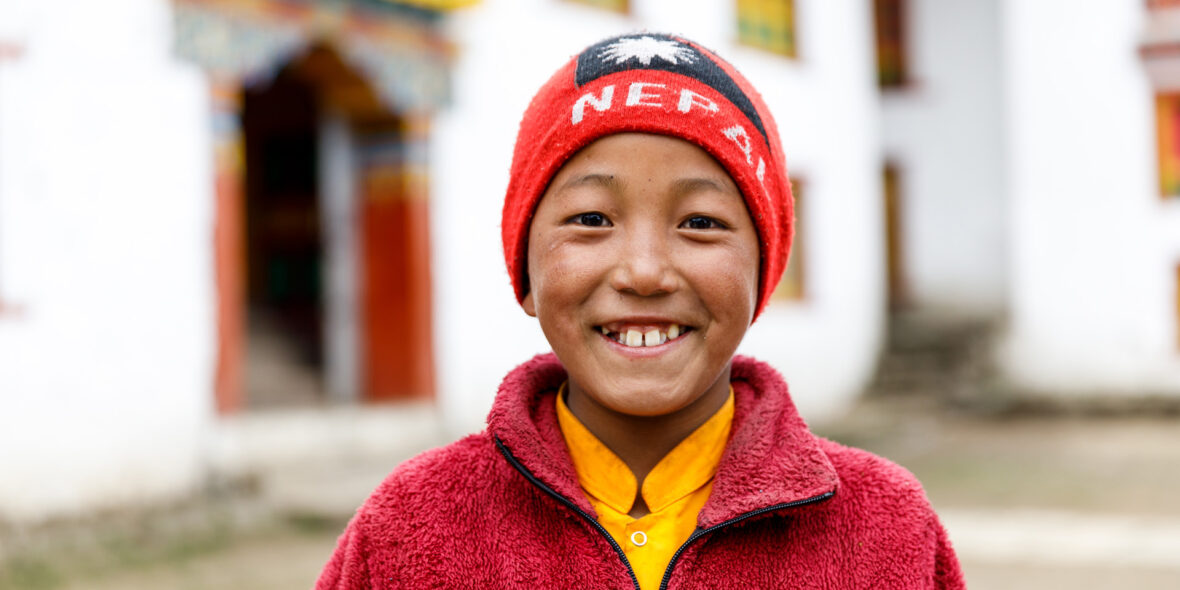
Day 05: Trek from Chiwong via Chyalsa to Phaplu
This morning we have a choice of setting out early to climb to the ridge all the way to Ratnagi for another chance of great mountain views, including Everest. If you have already seen plenty of mountains and want to take it a bit easier, we take a lower trail.
We head south to Chyalsa where we see the Tibetan camp and have lunch in the village. We will also see the Monastery here before returning Phapku via Sallari, which is the district headquarters and have been the bazaar town of the area for hundreds of years.
Walking time: Approx. 5-6 hours
Accommodation: Tea House
Meals included:
Breakfast, Lunch, Dinner
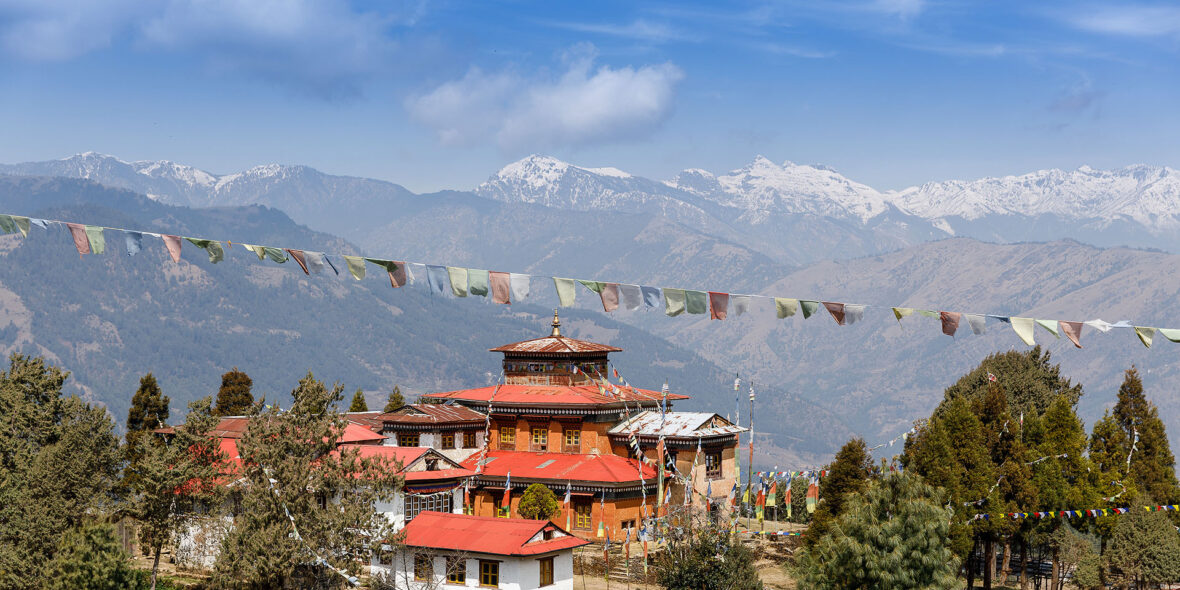
Day 06: Fly from Phaplu to Kathmandu
Today we bid farewell to the mountains and take the flight back into the Kathmandu Valley. In Kathmandu, we take you to your hotel.
The rest of the day is yours to relax and enjoy the luxuries of the city (and a hot shower!), just let us know if you would like any assistance organising anything for today.
Meals included: Breakfast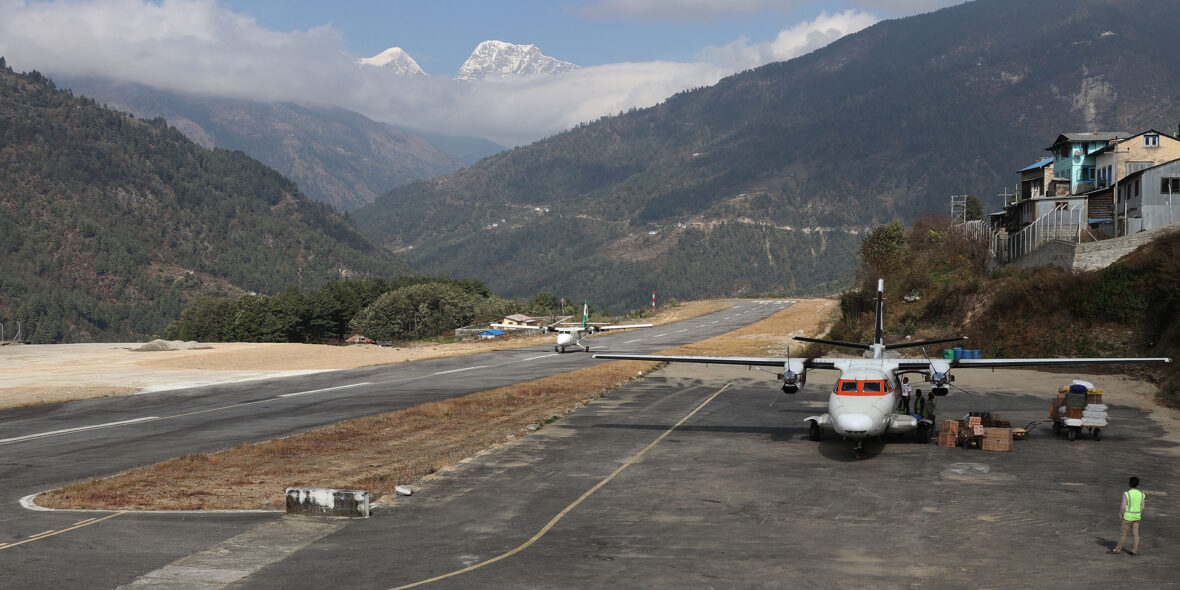
Included In Price
- Tea house accommodation while on trek
- Meals as per the itinerary (all meals on trek, with filtered drinking water)
- Transportation as per the detailed itinerary (includes the flights to and from Kathmandu for you and your guide, including transfers and airport taxes)
- Your trekking guide and porters, with all their transport, equipment, insurance, meals and accommodation
- A first aid kit with basic supplies appropriate for the group size and trek route – if you require or are taking specific medications it is critical that you discuss this with us prior to your trip departure
- Trekking permits and registration fees
Note: The local tea houses are basic but clean and they do not often have attached bathrooms or hot showers. The price is based on twin shares and does not include any extra charge that lodge owners may levy for single rooms, attached bathrooms, or hot showers (if these facilities are available) or for battery charging. We can’t know in advance what they may charge for such things in the different lodges along the way, so we prefer to leave this cost out, rather than pass along an estimated charge to you. The meal inclusions on the trek are breakfast (one set breakfast and a tea or coffee), lunch (one main meal and a tea or coffee), and dinner (soup, main, and dessert with a tea or coffee).
Not Included In Price
- Single supplement, please see single supplement charge
- International flights to and from Kathmandu; Nepal visa fees and international airport taxes; any excess baggage charges
- Comprehensive travel insurance that includes trip cancellation and emergency rescue / evacuation that covers all of the activities you will undertake during your trip should this be required for any reason (we require this as the minimum insurance cover)
- Services and activities not mentioned in the detailed itinerary above (eg additional nights, optional trips and sightseeing tours)
- Any gear or equipment that you may need to rent/buy – please ask us if you would like any advice about gear to bring/buy/rent
- Personal expenses (eg mineral water/soft drinks/bar bills, entrance/photography fees at monasteries, laundry, telephone calls, postage, donations, extra snacks, etc)
- Any extra charge that tea house owners may levy for single rooms, attached bathrooms, or hot showers (if these facilities are available) and charging of batteries
- Tips for your city guide, drivers, hotels, restaurants, etc (please ask if you would like guidance about appropriate tips)
- Costs incurred due to unforeseen events (eg caused by natural disasters, adverse road conditions/flight delays, labor strikes, fuel shortages, extreme exchange rate changes, etc)


